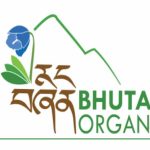General Background
Bhutan has embraced organic farming since early 2000s, driven by its commitment to environmental conservation, sustainable development, and cultural values, moreover policy emphasizes the promotion of organic agriculture as a means to preserve soil fertility, reduce the use of chemical fertilizers and pesticides, and promote biodiversity.
With great pleasure, we thus present the brief status and organic data for 19 districts as of June 2024, including the number of organic operators, the total area registered and certified, the number of households, and the groups or individuals within each district.
Table 1. Registered and Certified Organic Operators
Observation
- High Certification Rates: Districts like Bumthang, Gasa, Samdrupjongkhar, and Mongar have achieved 100% certification or close to it, indicating effective management and adherence to certification standards.
- Moderate Certification Rates: Districts such as Tashigang, Thimphu, Punakha, and Sarpang show moderate to high certification rates, ranging from 70% to 94.6%. These districts are also performing well in terms of certification.
- Lower Certification Rates: Wangduephodrang district stands out with a relatively low certification rate of 18.5%. This indicates a potential area for improvement in terms of meeting certification standards and possibly enhancing agricultural practices.

Fig 1. Registered and Certified area in 19 districts
Observation
Gasa, Bumthang and Mongar has 100% certified area with respect to the registered areas, while Paro (6.1%), Haa (9.2%), and Wangduephodrang (10.4%) have low certified area.

Fig 2. Registered household distribution across 19 districts
Observation
The data in the chart appears to show the number of registered individuals in various districts in Bhutan. A few key points are:
- Most Registrations: With 332, Chukha has the most registered households, followed by Samdrupjongkhar with 320 and Tashigang with 212 households.
- Lowest Registrations: Trashi Yangtse has the lowest number with 17 households and Punakha with 18 households.
- Trongsa (175), Samtse (196), Sarpang (189), Pemagatshel (209), and Bumthang (134) show moderate registration levels.

Fig 4. LOAS certified Individual and group operators in 19 districts
Observation
The combined totals for each Dzongkhag range from 1 (Gasa) to 53 (Zhemgang).
- Dzongkhag with Highest and Lowest Counts:
- Highest Number of Individual Farms: Zhemgang (43 farms)
- Lowest Number of Individual Farms: Gasa (0 farms)
- Highest Number of Organic Groups: Chukha, Samtse (18 groups)
- Lowest Number of Organic Groups: Gasa (1 groups)
Overall, keeping a detailed status of organic farming helps ensure that the benefits of organic agriculture are realized, sustained, and continuously improved upon for the benefit of farmers, consumers, and the environment. It promotes sustainable farming practices that preserve soil health, biodiversity, and water quality. Maintaining status information contributes to valuable data collection for research on organic farming methods and their impacts. It supports the development of innovative farming practices and technologies that can enhance organic farming efficiency and productivity. Moreover, sharing organic status supports informed decision-making.
Contributed by PRCP
1,140 total views, 5 views today



